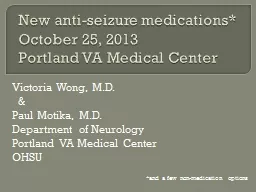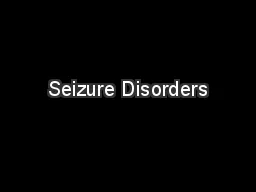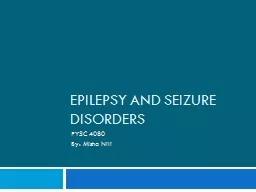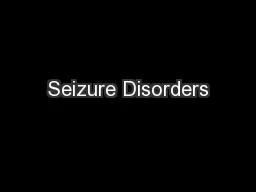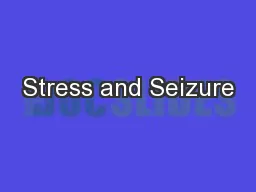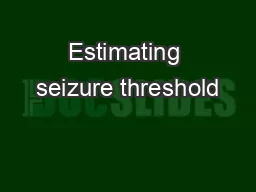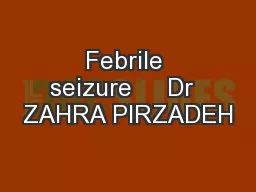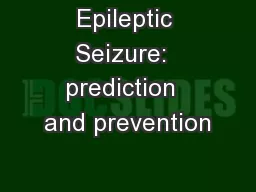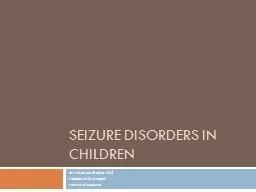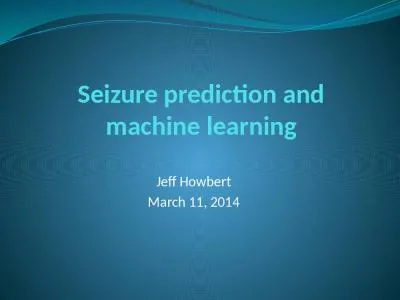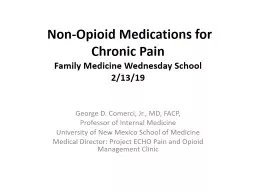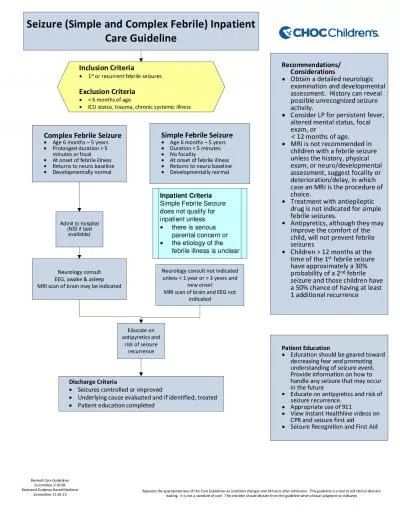PPT-New anti-seizure medications*
Author : jane-oiler | Published Date : 2018-11-10
October 25 2013 Portland VA Medical Center Victoria Wong MD amp Paul Motika MD Department of Neurology Portland VA Medical Center OHSU and a few nonmedication
Presentation Embed Code
Download Presentation
Download Presentation The PPT/PDF document "New anti-seizure medications*" is the property of its rightful owner. Permission is granted to download and print the materials on this website for personal, non-commercial use only, and to display it on your personal computer provided you do not modify the materials and that you retain all copyright notices contained in the materials. By downloading content from our website, you accept the terms of this agreement.
New anti-seizure medications*: Transcript
Download Rules Of Document
"New anti-seizure medications*"The content belongs to its owner. You may download and print it for personal use, without modification, and keep all copyright notices. By downloading, you agree to these terms.
Related Documents

